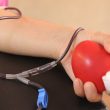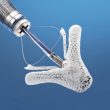Previous studies in which revascularization was guided by angiography alone found that coronary angioplasty does not improve outcomes compared with optimal medical treatment in patients with chronic stable angina. The FAME 2 trial (Fractional Flow Reserve Versus Angiography for Multivessel Evaluation) compared angioplasty guided by fractional flow reserve (FFR) with optimal medical treatment, arriving to...
7 articles on angioplasty that can draw your attention
1) Balloon Angioplasty: A Reasonable Plan B for Chronic Thromboembolic Hypertension Thromboembolic pulmonary hypertension is caused by pulmonary artery stenosis caused by organized thrombi. The only treatment potentially healing for this disease is surgical thrombectomy. However, patients with lesions in very peripheral branches or high surgical risk patients with comorbidities might benefit from a plan B,...
Ischemic and Bleeding Risk After Primary Angioplasty
Patients with ST-segment elevation myocardial infarction who undergo primary angioplasty are at high risk for both ischemic and bleeding events, which affect significantly both morbidity and mortality. An optimal selection of antithrombotic therapies in terms of strength and duration must take into account the timing for the procedure, since the risk for these complications may...
NCDR ACTION Registry: Anticoagulated Patients with No Higher Risk of Bleeding in Emergency Procedures
Patients with a history of atrial fibrillation treated with warfarin or any of the new direct oral anticoagulants undergoing acute myocardial infarction do not present higher risk of bleeding when receiving angiography or angioplasty. In fact, this subgroup of anticoagulated patients showed lower in-hospital mortality than the control group. After analyzing 6471 patients undergoing ST elevation MI...
FOURIER: Evolocumab Found Beneficial for Patients with Peripheral Vascular Disease of Prior MI
Patients with peripheral vascular disease or prior acute myocardial infarction (especially within the first two years after the event) could find a particular benefit the PCSK9 receptor inhibitor evolocumab. Given its high cost, the drug is not yet cost/effective and when prescribed, most patients were no table to complete the treatment. Read also: “Missed Opportunities with...
SOLACI-SUC Joint Session at the Cardiology Congress in Uruguay
From November 9th to November 11th, Punta del Este received the best cardiologists in Latin America. These 3 days of intense scientific activity included the SOLACI-SUC Joint Symposium, which was composed of a structural module (with presentations on TAVI, Mitraclip, paravalvular leaks, and clinical cases) and a coronary module (with activities centered on coronary bifurcation lesions,...
Though on the Rise, the Transradial Approach to Primary PCI Remains Underused
There is evidence to support the use of the transradial approach to coronary angioplasty. Several randomized studies have shown reduced bleeding and vascular complications when adopted, compared against patients treated with the femoral approach. There are also studies and meta-analysis suggesting that, in the context of primary PCI, the benefit would be even bigger, with significant events...
Mitral Valve Repair with MitraClip Is Safe in High-Risk Patients
Courtesy of Dr. Carlos Fava. Transcatheter mitral valve repair with MitraClip has shown good results in symptomatic patients with extreme surgical risk in different studies. However, its “real world” benefits have not been studied in depth due to how complex this strategy is compared with other usual procedures. This study analyzed 2952 patients who underwent mitral...
The End of Aspirin for Anticoagulated Patients Undergoing PCI
The discussion about the best anti-thrombotic strategy for patients with atrial fibrillation undergoing PCI seemed never-ending until the RE-DUAL PCI trial was published in the New England Journal of Medicine (NEJM). This study has arrived to simplify the tough choice between the risk of a thrombotic event vs. the risk of bleeding with a simpler scheme, without...
ABSORB III: after 3 Years, the Bioresorbable Scaffold is Still a Disappointment
Courtesy of the SBHCI. The 3-year outcomes of the ABSORB III trial, which randomized 2008 patients 2:1 to an everolimus eluting bioresorbable scaffold (1322 patients) vs. a metallic stent with permanent everolimus eluting polymer (686 patients), was published with low profile and great disappointment. Primary end-point, a composite of target vessel failure, occurred in 13.4% of patients receiving...









